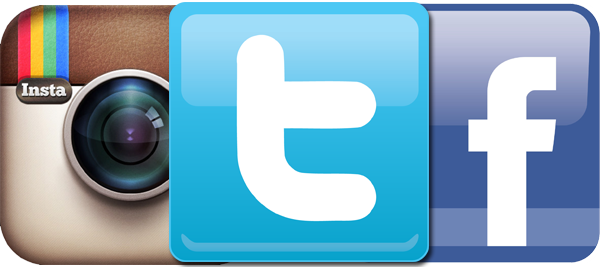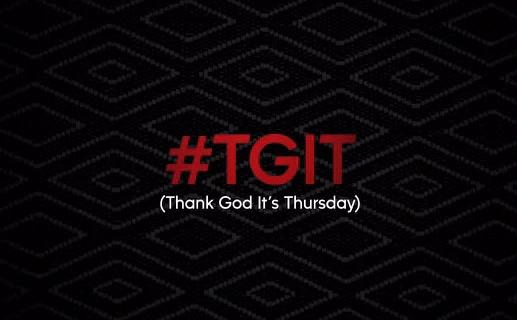The Game Changer
It’s no secret, social media has changed the landscape of marketing in a way that surpassed even industry expert’s predictions. Between DVR and our society’s obsession with mobile devices, businesses and brands soon came to the realization that there was an increasing disengagement with their audience. The question that everybody kept asking themselves is how do we keep our target audience engaged? The answer was and still is quite simple: through social media. While that may seem overly simplistic, it’s also right. What some brands and organizations fail to understand though is that you need to supplement whatever marketing efforts you make with social media interaction.
Twitter, Facebook or Instagram?
Regardless of who you are or what your brand is, Twitter, Facebook and Instagram are the three most useful social media tools you have at your disposal when you want to capture audience engagement. Twitter is great because it’s a prime example of millions of people engaging in numerous conversations with friends, strangers, brands, businesses, celebrities, movies, TV shows, etc. Even though Facebook and Instagram might have more active monthly users, Twitter is more pertinent in many ways. Why? Because not only does Twitter have a faster pace and mimics real time conversation, it’s also universally accessible to businesses and brands regardless of industry. Because Instagram is based on photo sharing, some industries might find it difficult to successfully use it as their primary social outreach.
If you’re a business or service, it can be difficult to determine if social media efforts have directly impacted your sales or website traffic; however, the same cannot be said when talking about TV. It’s easy to see that there is a direct correlation between active social media use and the success of a show. This brings me to, what I like to call, the Scandal Effect.
The Scandal Effect
Scandal is a prime example of how social media largely influenced its success. Chatter among the masses on social media is the technological equivalent of good word-of-mouth. When it premiered in the spring of 2012 as a mid-season replacement, it wasn’t a huge success, but at the same time, it also wasn’t a failure either. ABC took a chance and renewed it for a 13-episode second season anyway. And that’s when things started to shift. It was during this time period that networks began kindly suggesting to their show’s talent that they live tweet during the airing of episodes. It was a fairly new concept, but what the cast and crew of Scandal did was virtually unprecedented. Not only did they live tweet episodes with their cast mates and fans, but they did so without any network supervision, meaning that all of their tweets were organic, unscripted and personal. And it paid off hugely. By the second season finale, the ratings had soared so much that they actually began to consistently win the all-important 18-49 key demographic in their time slot. By season three, it seemed like all anyone could talk about on Thursday was Scandal.
This is their social network growth from season to season:
ABC is winning the #Hashtag Game
Now I won’t give the cast and crew all of the credit, most of it, but not all of it. I would be remiss if I didn’t give a shout out to ABC’s social team. By now, we all know what a hashtag is and we all know how useful it can be when connecting with other people who are talking about similar things. But is there an art to creating a hashtag? Can you really control the conversation? If you were to ask ABC, the answer they would give you would be a resounding yes.
ABC has brilliantly come up with unique and clever hashtags that ignite conversations among the masses. At various points throughout an episode, a new hashtag is flashed across the screen, something like #WhatTheHuck, #WhoShotFitz, or #YouWantMeEarnMe in order to spur the conversation. While those hashtags are great and all, nothing compares to the one they reinvented last summer: #TGIT
What makes #TGIT so brilliant is its simplicity. ABC took an old reference (TGIF), reinvented it and then made it go viral. They paid attention to how their audience articulated their excitement and gave them the perfect hashtag to use. This hashtag has become so popular that even people who are discussing shows on different networks are now using it. I do believe that’s what Charlie Sheen calls winning!
So, what’s the point?
Obviously, not every business has the mass exposure and brand recognition that ABC and Scandal does. I get that. However, even with ABC’s mass reach, not every show is a success. The point I’m trying to illustrate here is that regardless of what kind of business you run or what industry you are in, you have to start somewhere – whether it’s from the ground up or with an established following already there.
If you are a small, locally-owned business, it can be a process to build an audience and following. But, you have to start somewhere and now is the time.
Here’s what to do:
- Identify your target audience and find them on Twitter (Tools such as Moz’s FollowerWonk can help you find people talking about your topic of interest.)
- Immerse yourself in the community (read tweets, search hashtags relevant to your community, be in the-know.)
- If there isn’t one, build one
- Be the expert in your niche (Give your honest opinions on things that are happening in your industry and share articles that showcase your expertise. Heck, write your own if you can!)
- Join in on the conversation (Tweet people back and forth. Make connections. Make friends!)
- If there isn’t one, start one (Don’t be afraid to start tweeting!)
- And even if there are ongoing conversations happening, start new ones. (Continue to not only add to conversations, but start your own. If you showcase your expertise and engage with the right people, your voice will eventually be heard in the Twittersphere.)
One of the biggest things to keep in mind when exploring social media for your company is that oftentimes, social media will not generate qualified leads or sales for your business. The purpose of social media is not to be a lead-generation source, but instead a way to build community and increase brand awareness. With the right tools and attitude, you can do just that. Engage with your audience and become a part of the conversation – whatever that conversation may be.
Nobody said it would be easy, they just said it’d be worth it.
Like it? Hate it? Wanna chat? Follow me on Twitter @nickibee88JUMP TO A CATEGORY
WEB ANALYTICS | SEARCH OPTIMIZATION | PAID ADVERTISING | COMPANY NEWS











